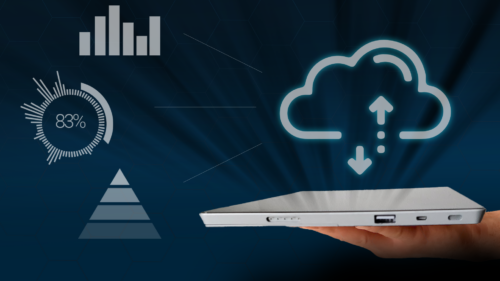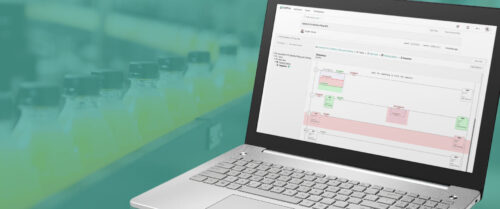Open-source benefits for industrial controllers
New controller options make it possible to add open-source features to industrial-grade automation. Think of industrial versions of Raspberry Pi or Arduino controllers.
Industrial microcontrollers are bringing open-source benefits to industrial applications even though many industrial automation technologies seem to be a frumpy distant relative of the glitzy consumer-grade hardware and software so common in our everyday lives. Industrial controller technologies are closing the gap with consumer cousins, which is creating some significant and unexpected benefits for end users.
Industrial automation technologies, including controllers, are often portrayed as developing at a slower pace when compared with consumer technologies, and rightfully so. The lag is explained because consumer technologies only will be adopted into more conservative and rugged industrial applications after proven and accepted in the mass market.
Furthermore, because industrial applications need to reliably operate potentially dangerous equipment for years, it is more important for automation products to be carefully crafted and packaged. This means other controller features, such as ease of use and good connectivity, are often secondary considerations.
Over the past 15 years or so, a “maker” culture has gained momentum in the consumer world. This community brings a passion and creativity to using PCs and microcontrollers to operate all sorts of do-it-yourself projects. Most of these developers make these homebrew projects “open source” for anyone to use, but the technologies usually aren’t ready for the factory floor.
Industrialized microcontrollers now combine open source benefits with proven industrial platforms to give end users more automation options.
From PLC to PAC and beyond
A few decades ago, it was pretty clear what an industrial programmable logic controller (PLC) was, and also what it wasn’t. Compact, built for installation on machinery and connected to monitor sensors and command devices like valves, these devices helped power the third industrial evolution of automation. They often used specialized cables, communication protocols, and languages for these tasks. Even though they were relatively–closed platforms, they were very mission specific and effectively tailored for industrial applications.
As technologies like Ethernet, faster and cheaper processors and more reliable PC operating systems became available, the consumer and industrial markets benefited.
For the manufacturing industry, PLCs became more convenient and economical to use. Some vendors began marketing their most capable PLCs as programmable automation controllers (PACs) as added features made them suitable for a greater number of applications; greater connectivity made it possible to network more devices.
Today, computing and wireless hardware are so compact and cost-effective that even the smallest field-located sensors and devices have become intelligent and are able to communicate with each other and with supervisory systems. These smart devices make up the Industrial Internet of Things (IIoT) and there is a growing amount of processing power located at the industrial edge.
Controllers, gateways, input/output (I/O) modules, and smart sensors continue to be built specifically for industrial markets. But defining the capabilities and roles for PLC, PAC, edge or IIoT devices becomes a little more difficult as they each overlap to some extent.
Now, as some users look for ways to combine their open–source experiences into their industrial projects, new industrialized products incorporating open source are leading to even more options.
Open-source processing
Open–source projects are relevant for industrial applications in many ways. For example, the common Linux open–source operating system has played an increasing role in the past few years as it is embedded within IIoT implementations and as a platform for running control and visualization software.
Open–source programmers make code snippets and entire programs available to all users, generally at no cost. Many would consider this open nature as introducing an increased risk to those implementing it. However, greater openness makes code available for anyone to inspect, and the large community of developers can provide a quick response when issues are identified.
From an open hardware standpoint, the two leading microcontrollers are Raspberry Pi and Arduino. The former is more like a miniaturized single-board PC, while the latter is more barebones. For Arduinos, stackable accessory boards called shields add Ethernet, Wi-Fi, GPS, and other extended functionality, making these systems well suited for prototyping and hobbies (Figure 1).
Microcontrollers like the Arduino were created for students learning to program in C++ and are designed to be usable by those with any level of programming experience. An effectively free and extensive software library, many low-cost hardware options, and an end–user design focus have made this open–source concept a favorite of the maker community.
Microcontrollers’ popularity has made the industrial automation industry take notice because many of the features desired by hobbyists also are needed for industrial projects. Some end users have even incorporated consumer-grade microcontrollers into industrial applications, but there is some risk involved.
Reducing open-source controller risk
As interesting as microcontrollers are, many issues prevent them from being suitable for industrial applications. A few challenges are:
- Unprotected bare circuit board and consumer-grade design to remain economical
- Not designed to meet temperature, vibration and electrical noise conditions present in industrial applications
- Not extensively field–tested in typical industrial environments
- Lack of I/O using typical industrial signals
- No agency approvals or industrial certifications.
Despite these risks, some end users are looking for ways to take advantage of open–source benefits, but in a manner robust enough for any kind of commercial or industrial application. A few industrial vendors have worked to combine open–source elements with industrial form factors so end users can realize the best of both worlds and eliminate or significantly minimize these risks (Figure 2).
Many conventional PLC form factors are already modular with I/O and other modules connecting to a processor. For example, one supplier realized they could industrialize an Arduino controller and configure it to take the place of, or supplement, a traditional PLC controller. Engineers redesigned a microcontroller from the ground up with industrialized parts and assembly methods and packaged it in a protected form factor compatible with industrial I/O modules (Figure 3).
The result is an industrialized open–source controller that connects with industrial power supplies and I/O modules, so a configuration can be created for use in most general automation applications. The manufacturer also makes industrially-hardened shields and third-party commercial Arduino controller shields available for increased functionality.
Developers use a software interface maintaining Arduino sketch to program in C++. For enhanced usability, the supplier also created a drag–and–drop graphical programming interface (Figure 4) which simplifies the most common programming tasks. This allowed the user to work with block programming as-is or add blocks of C++ code to access more advanced programming features.
Open-source controller programming benefits
End users choosing open source for their automation project will certainly benefit from the mashup of contemporary programming options with proven industrial practicalities. Users can mix-and-match many ways to get just what they need.
Sometimes, it makes sense to continue using a PLC-based system, while adding an industrialized open controller networked nearby to perform specialized tasks or calculations. In some cases, users can develop all the control logic and general-purpose calculations in the open controller, and then automate associated equipment with I/O devices.
Another consideration involves design and maintenance personnel skill sets. While existing industrial users have been trained on PLCs through their careers, the next generation of users are more likely to be comfortable with contemporary technologies and programming languages used in maker hardware.
This platform can bridge open controllers with PLCs and I/O, industrial manufacturers can apply their current skillsets while growing their technical staff with new employees who would prefer to work on modern open–source platforms.
Open-source controller applications
As industrial open source gains momentum, users will continue to find new applications. A basic way to use an open controller, even for those who are new to C++, is to configure it as an inexpensive data logger. Original equipment manufacturers (OEMs) can use open controllers as an all-in-one solution for operating machinery, while incorporating more advanced algorithms and data handling than they would with a PLC.
Open source also can be a great fit for various semi-industrial applications like environmental controls or laboratory equipment monitoring. More consumer-oriented applications such as automated smoker grills, home automation and agricultural projects also become viable with industrialized open–source platforms.
For instance, a gardening hobbyist might configure a microcontroller to operate a backyard vegetable hothouse and irrigation. At work, they could use these same concepts to automate much larger–scale agricultural systems and equipment. Someone using a microcontroller at home to remotely control lights and other devices also could extend the same concepts to automate lighting and environmental controls at a commercial or industrial facility.
Choose controllers for industrial environments
The proliferation of consumer-grade microcontrollers might be a tempting automation choice, especially for machine manufacturers, due to the low hardware cost. However, any controller unable to withstand an industrial environment will drain support budgets because up to 20% of operating expenses are typically maintenance–related.
Now that PLC and PAC technologies have evolved to include industrialized open–source hardware options, end users can incorporate modern automation systems they want using the robust platforms they need.
Bill Dehner, technical marketing engineer, AutomationDirect. Edited by Chris Vavra, associate editor, Control Engineering, CFE Media and Technology, cvavra@cfemedia.com.
MORE ANSWERS
Keywords: PLC, PAC, open-source controllers
Industrial automation controllers designed for the plant floor are catching up with consumer-grade models.
Open-source controllers offer many new, previously impossible options to industrial automation users.
Industrial controllers, regardless of feature, still need to be designed to withstand harsh conditions to operate properly.
ONLINE
Read this article online at www.controleng.com for additional stories from the author.
Consider this
What open-source hardware options are the most wanted on the plant floor?
Do you have experience and expertise with the topics mentioned in this content? You should consider contributing to our CFE Media editorial team and getting the recognition you and your company deserve. Click here to start this process.






